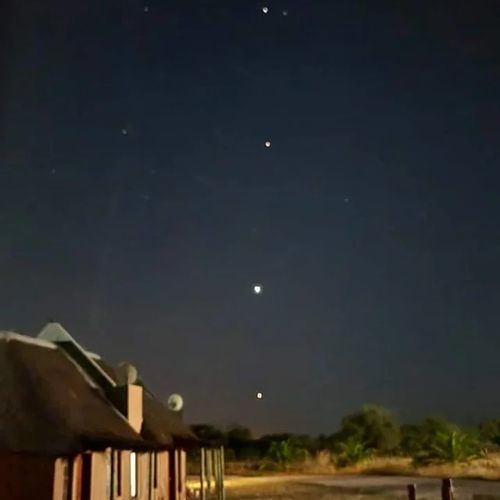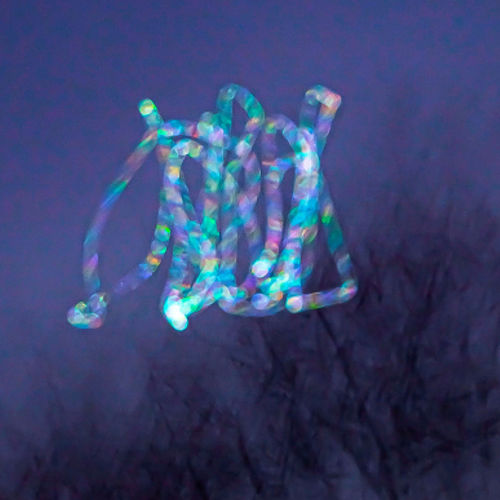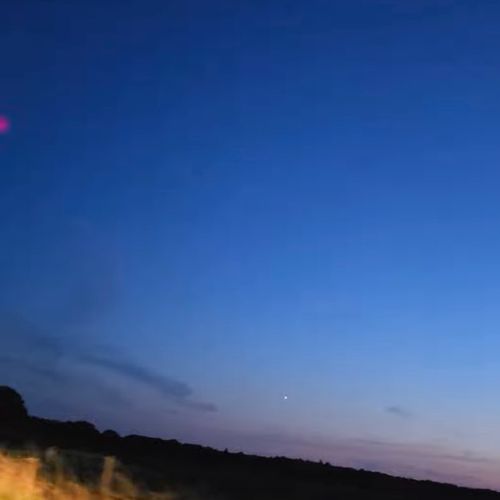| ID | #1673354494 |
| Added | Tue, 10/01/2023 |
| Author | July N. |
| Sources | U
|
| Phenomena | |
| Status | Result
|
| Resume |
Initial data
A bright object was seen over Armilla, shimmering with different colors of the rainbow. He didn't move and hung in one place for a long time.
Hypotheses
The heavenly bodies

The brightest heavenly bodies in the sky are Venus, Jupiter, and sometimes Mars and, of course, the Moon.
Venus is the bright yellow of the evening or morning star, shining in the sky on the background of evening or dawn. Maximum brightness of Venus can reach up to 4.3 m, and she is the third brightness of the sun in earth's sky after the sun and the moon. It so well reflects the light of the Sun that it is relatively easy to see and day, especially if you know the location. It manifests itself in the form of tiny blinking white dots.
Events
Rocket launches (from space.skyrocket.de)
- Site: Cape Canaveral Air Force Station, Eastern Test Range, Cape Canaveral, Florida (USA) Vehicle: Falcon-9 v1.2 (Block 5) Payload: OneWeb L16-1 (OneWeb 0532) OneWeb L16-2 (OneWeb 0533) OneWeb L16-3 (OneWeb 0541) OneWeb L16-4 (OneWeb 0543) OneWeb L16-5 (OneWeb 0544) OneWeb L16-6 (OneWeb 0560) OneWeb L16-7 (OneWeb 0565) OneWeb L16-8 (OneWeb 0567) OneWeb L16-9 (OneWeb 0569) OneWeb L16-10 (OneWeb 0570) OneWeb L16-11 (OneWeb 0571) OneWeb L16-12 (OneWeb 0572) OneWeb L16-13 (OneWeb 0573) OneWeb L16-14 (OneWeb 0588) OneWeb L16-15 (OneWeb 0598) OneWeb L16-16 (OneWeb 0599) OneWeb L16-17 (OneWeb 0614) OneWeb L16-18 (OneWeb 0616) OneWeb L16-19 (OneWeb 0617) OneWeb L16-20 (OneWeb 0618) OneWeb L16-21 (OneWeb 0619) OneWeb L16-22 (OneWeb 0620) OneWeb L16-23 (OneWeb 0621) OneWeb L16-24 (OneWeb 0622) OneWeb L16-25 (OneWeb 0623) OneWeb L16-26 (OneWeb 0624) OneWeb L16-27 (OneWeb 0625) OneWeb L16-28 (OneWeb 0626) OneWeb L16-29 (OneWeb 0627) OneWeb L16-30 (OneWeb 0628) OneWeb L16-31 (OneWeb 0629) OneWeb L16-32 (OneWeb 0631) OneWeb L16-33 (OneWeb 0709) OneWeb L16-34 (OneWeb 0710) OneWeb L16-35 (OneWeb 0711) OneWeb L16-36 (OneWeb 0713) OneWeb L16-37 (OneWeb 0715) OneWeb L16-38 (OneWeb 0716) OneWeb L16-39 (OneWeb 0717) OneWeb L16-40 (OneWeb 0719) OneWeb L16-1, ..., L16-40
- Site: Pacific Spaceport Complex - Alaska (Kodiak Launch Complex), Kodiak Island, Narrow Cape, Alaska (USA) Vehicle: RS1 Payload: VariSat 1A VariSat 1B
Investigation
Most likely, this is an ordinary celestial body. Stellar scintillation or twinkling of stars is obtained when bright light from a distant source passes through layers of the atmosphere that differ in density and temperature, which are similar to lenses that refract light. This leads to the appearance of rainbow colors.
News: Why does Sirius twinkle with all the colors of the rainbow?

Sirius is the brightest star in the sky. At this time of year, the star twinkles iridescent, being low in the eastern part of the sky after sunset.
Roy Spencer from Huntsville, Alabama, has revealed a wonderful way to capture these colors by manually swinging his camera as he photographed Sirius.
A shutter speed of 5 seconds and defocusing was applied, the star was at an altitude of 15 degrees.
Resume
The heavenly bodies

The brightest heavenly bodies in the sky are Venus, Jupiter, and sometimes Mars and, of course, the Moon.
Venus is the bright yellow of the evening or morning star, shining in the sky on the background of evening or dawn. Maximum brightness of Venus can reach up to 4.3 m, and she is the third brightness of the sun in earth's sky after the sun and the moon. It so well reflects the light of the Sun that it is relatively easy to see and day, especially if you know the location. It manifests itself in the form of tiny blinking white dots.
Similar facts
Log in or register to post comments



